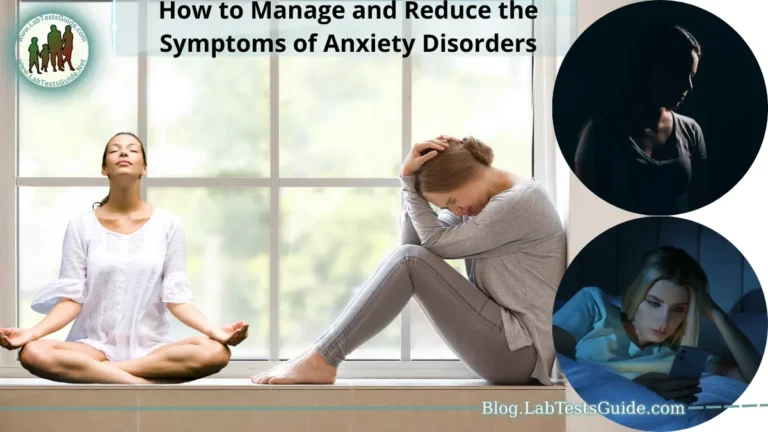In this guide, we will explore how to prevent and manage common eye problems effectively. By following these preventive measures and learning how to manage these conditions, you can promote optimal eye health and minimize the impact of potential eye problems.

Remember, while these suggestions can be helpful, it’s always important to consult with an eye care professional for a proper diagnosis and personalized advice. Now, let’s delve into the strategies for preventing and managing common eye problems.
Maintaining Good Eye Health:
Here are some key strategies to promote optimal eye health.
Regular Eye Exams:
- Schedule regular comprehensive eye exams with an optometrist or ophthalmologist. These exams can detect early signs of eye problems, such as refractive errors, glaucoma, cataracts, and macular degeneration. Based on your age and overall health, your eye care professional will recommend the frequency of these exams.
Eye Protection:
Protecting your eyes from potential hazards is essential for preventing injuries and maintaining good eye health. Consider the following precautions.
- Sunglasses: Wear sunglasses that block 100% of UVA and UVB rays to protect your eyes from harmful ultraviolet radiation. Look for sunglasses labeled with UV 400 or 100% UV protection.
- Safety Eyewear: When participating in activities that pose a risk of eye injury, such as sports, DIY projects, or working with hazardous materials, wear appropriate safety goggles or glasses.
- Screen Time: Reduce eye strain from digital screens by using screen protectors, adjusting screen brightness and contrast, and maintaining a comfortable viewing distance.
By incorporating these practices into your daily routine, you can significantly reduce the risk of common eye problems and maintain optimal eye health.
Common Eye Problems and Their Prevention:
Here are some common eye problems and strategies for their prevention.
Dry Eyes:
Dry eyes occur when the eyes do not produce enough tears or the tears evaporate too quickly. This can lead to discomfort, redness, and blurred vision. To prevent and manage dry eyes, consider the following.
- Blinking Exercises: Take regular breaks during activities that involve prolonged eye focus, such as working on a computer or reading. Blinking frequently helps to moisten the eyes and reduce dryness.
- Use of Artificial Tears: Over-the-counter artificial tear drops or lubricating eye drops can provide relief from dryness. Use them as directed or as recommended by an eye care professional.
- Avoiding Irritants: Minimize exposure to irritants like smoke, dry air, and wind. Use a humidifier in dry environments and wear protective eyewear, such as wraparound glasses, when outdoors on windy days.
Computer Vision Syndrome:
Computer Vision Syndrome (CVS) is a condition caused by prolonged computer, tablet, or smartphone use. Symptoms include eye strain, blurred vision, headaches, and neck or shoulder pain. To prevent CVS,
- Taking Regular Breaks: Follow the 20-20-20 rule – every 20 minutes, look away from the screen and focus on an object at least 20 feet away for 20 seconds.
- Adjusting Screen Settings: Position your screen at eye level and adjust the brightness, contrast, and font size for comfortable viewing.
- Proper Lighting: Ensure that the lighting in your workspace is adequate. Avoid glare on the screen by using window coverings or an anti-glare screen protector.
Eye Strain:
Eye strain can result from activities that require intense visual concentration, such as reading, driving, or working on a computer. To prevent eye strain.
- The 20-20-20 Rule: As mentioned earlier, take regular breaks to rest your eyes and reduce strain. Look at an object 20 feet away for 20 seconds every 20 minutes.
- Correct Lighting and Ergonomics: Ensure proper lighting in your workspace to reduce eye strain. Position your computer screen so that your eyes are level with the top of the monitor. Use ergonomic chairs and arrange your desk to promote good posture.
- Eye Exercises: Perform simple eye exercises, such as rolling your eyes, focusing on near and distant objects, and massaging your temples, to relax the eye muscles.
Cataracts:
Cataracts are the clouding of the lens in the eye, leading to blurred vision and decreased visual clarity. While cataracts are primarily age-related, certain preventive measures can be taken.
- Protecting Eyes from UV Radiation: Wear sunglasses with UV protection and broad-brimmed hats to shield your eyes from harmful UV rays.
- Quitting Smoking: Smoking is a risk factor for cataract development. Quitting smoking or avoiding exposure to secondhand smoke can reduce the risk.
- Eating a Healthy Diet: Consume a diet rich in antioxidants, vitamins, and minerals. Include fruits, vegetables, and foods high in vitamins C and E to promote eye health.
3.5. Age-Related Macular Degeneration (AMD):
- Age-Related Macular Degeneration (AMD) is a leading cause of vision loss in older adults. While some risk factors are uncontrollable, you can take certain preventive measures
- Regular Eye Exams: Routine eye exams can help detect early signs of AMD. Early diagnosis and intervention can slow down the progression of the
Managing Common Eye Problems:
Here are some strategies for managing common eye problems.
Redness, Itching, and Allergies:
- Over-the-Counter Eye Drops: Non-prescription eye drops can provide temporary relief from redness, itching, and allergies. Look for eye drops specifically formulated for these symptoms and use them according to the instructions.
- Avoiding Allergens: Identify and avoid allergens that trigger your symptoms. Common allergens include pollen, pet dander, dust mites, and certain foods. Keep your living environment clean and use air purifiers if necessary.
- Cold Compresses: Applying a cold compress or a clean, damp cloth to your closed eyes can help reduce inflammation and soothe itching.
Conjunctivitis (Pink Eye):
- Frequent Handwashing: Pink eye is often caused by bacterial or viral infections. To prevent its spread and manage the condition, wash your hands regularly with soap and water, especially before touching your eyes.
- Avoiding Touching or Rubbing Eyes: Touching or rubbing your eyes can worsen the infection and spread it to the other eye. Be mindful of this and try to avoid touching your eyes unnecessarily.
- Antibiotic or Antiviral Medications (if required): Depending on the cause of conjunctivitis, your doctor may prescribe antibiotic or antiviral eye drops or ointments. Follow the prescribed treatment regimen carefully.
Stye:
- Warm Compresses: Applying warm compresses to the affected eyelid can help alleviate the discomfort associated with a stye. Gently press a clean, warm washcloth against the closed eye for several minutes, several times a day.
- Avoiding Touching or Popping the Stye: It’s important to refrain from touching, squeezing, or attempting to pop a stye. Doing so can introduce more bacteria and potentially worsen the condition.
- Good Eyelid Hygiene: Keep your eyelids clean by gently washing them with mild, tear-free baby shampoo diluted in warm water. Use a clean cotton swab or washcloth to gently clean the eyelid area.
Eye Injuries:
Seeking Immediate Medical Attention: In case of any eye injury, seek immediate medical attention. Do not try to treat the injury on your own.
- Applying a Cold Compress: For minor eye injuries, applying a cold compress or ice pack wrapped in a clean cloth can help reduce swelling and pain.
- Avoiding Rubbing or Pressing the Eye: Rubbing or pressing on the injured eye can cause further damage. Try to keep the eye protected and avoid any unnecessary pressure.
It’s important to consult with an eye care professional for proper diagnosis and guidance when dealing with any eye problem. They can provide personalized advice and recommend specific treatments or medications based on your condition.
Remember, these management strategies are general guidelines and may not be suitable for all cases. Always follow the advice of your healthcare provider for your specific situation.
Conclusion:
Taking care of your eyes and preventing common eye problems is essential for maintaining good vision and overall eye health. By following the strategies outlined in this guide, such as regular eye exams, maintaining a healthy lifestyle, and protecting your eyes from potential hazards, you can reduce the risk of developing common eye problems.
In the event that you do experience common eye problems, knowing how to manage them is equally important. Whether it’s dry eyes, computer vision syndrome, eye strain, cataracts, conjunctivitis, styes, or eye injuries, there are various preventive measures and management strategies you can employ.
However, it’s important to remember that this guide serves as general information and should not replace professional medical advice. If you have any concerns about your eye health or experience persistent eye problems, it is always recommended to consult with an eye care professional who can provide a proper diagnosis and appropriate treatment.
By prioritizing eye health, staying proactive in prevention, and seeking proper management when needed, you can maintain optimal eye health and enjoy clear vision for years to come.






